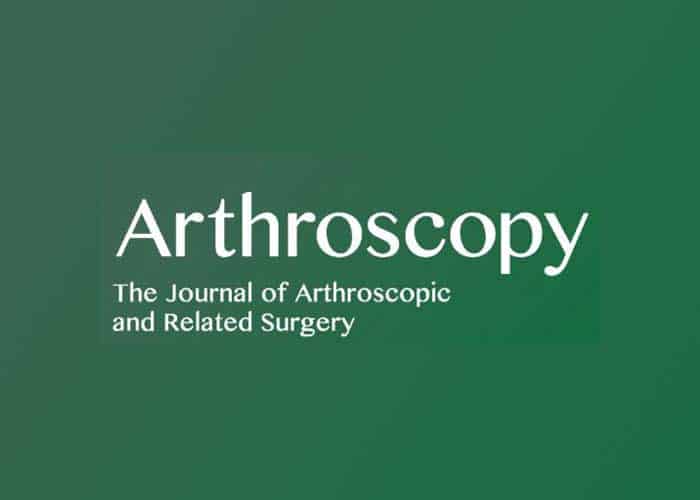
Authors:
Peter J. Millett, M.D., M.Sc., Lucca Lacheta, M.D., Marilee P. Horan, M.P.H., William W. Schairer, M.D., Grant J. Dornan, M.Sc., Jonas Pogorzelski, M.D., and M.H.B.A.
Abstract:
Purpose
To report the clinical and structural outcomes for non-pseudoparalytic irreparable posterosuperior rotator cuff tears treated with superior capsule reconstruction (SCR) using dermal allograft (DA).
Methods
Patients who underwent SCR using DA with a mean thickness of 3 mm for irreparable posterosuperior rotator cuff tears and underwent surgery at least 2 years earlier were included. Outcomes were assessed prospectively by the American Shoulder and Elbow Surgeons (ASES), Single Assessment Numeric Evaluation, and Quick Disabilities of the Arm, Shoulder and Hand (QuickDASH) scores; patient satisfaction; and visual analog scale for pain. Structurally, acromiohumeral distances (AHDs) were assessed both preoperatively and postoperatively (standard radiographs). Graft integrity was assessed by magnetic resonance imaging. Clinical failures were reported.
Results
We included 22 patients with a mean age of 56 years (range, 41-65 years) and a mean follow-up period of 2.1 years (range, 2-3 years). The ASES score improved from 54.0 to 83.9 ( P < .001); the Single Assessment Numeric Evaluation score improved from 44.9 to 71.4 ( P < .001); and Quick Disabilities of the Arm, Shoulder and Hand score (QuickDASH) improved from 37.6 to 16.2 ( P = .001). Of the patients, 85% achieved an improvement in the ASES score that exceeded the minimal clinically important difference (11.1 points). The median patient satisfaction rating was 8.5 (range, 1-10). The median preoperative visual analog scale score decreased from 4 to 0 (range, 0-3) postoperatively ( P < .001). Complete radiographs of 19 of 22 patients (86%) were obtained at a mean of 5.2 months (range, 1.4-10 months) postoperatively and showed a significant increase in the mean AHD from 7.0 mm preoperatively to 8.3 mm postoperatively ( P = .029). Postoperative magnetic resonance imaging scans were obtained in 95% of the patients (21 of 22) at a mean of 2.5 months (range, 0.3-10.2 months) postoperatively and showed graft integrity rates of 100% (21 of 21) on the tuberosity side, 76% (16 of 21) at the midsubstance, and 81% (17 of 21) on the glenoid side. No significant differences in clinical outcome scores ( P > 0.930) were found in patients with intact grafts versus those with torn grafts. The number of previous shoulder surgical procedures was a negative predictor of clinical outcome. There was 1 clinical failure.
Conclusions
SCR using DA for irreparable tears improves outcomes with high satisfaction and high graft integrity at short-term follow-up. Graft integrity, although correlated with an increased AHD, had no correlation with clinical outcomes at final follow-up.
